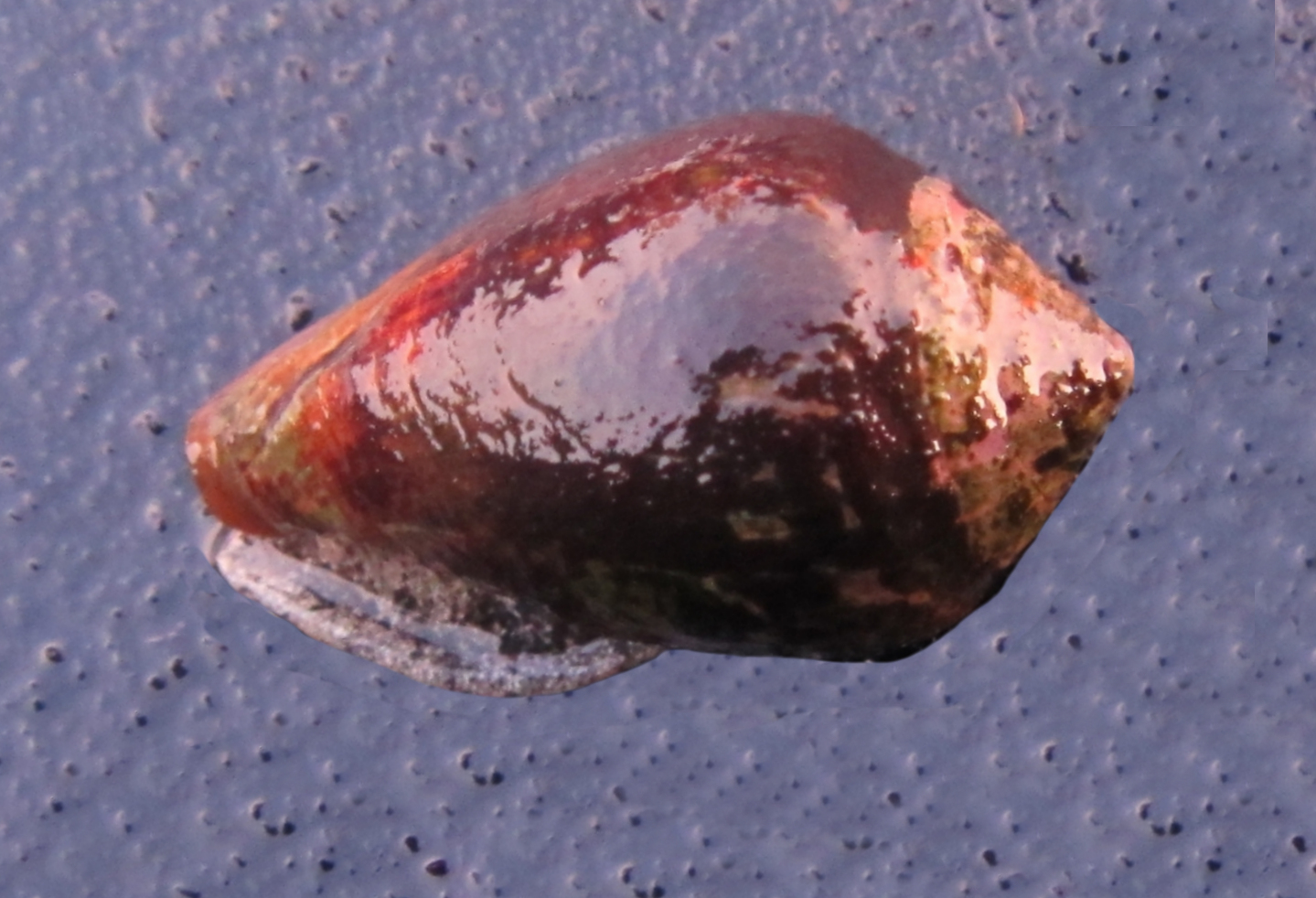California Cone Shell, Californiconus californicus
 California Cone Shell, Californiconus californicus. Shell collected off the beach in the greater San Diego area, San Diego, California, March 2015. Size: 4.2 cm (1.7 inches) x 1.9 cm (0.8 inches). Photograph and identification courtesy of Bob Hillis, Ivins, Utah.
California Cone Shell, Californiconus californicus. Shell collected off the beach in the greater San Diego area, San Diego, California, March 2015. Size: 4.2 cm (1.7 inches) x 1.9 cm (0.8 inches). Photograph and identification courtesy of Bob Hillis, Ivins, Utah.
The California Cone, Californiconus californicus (Reeve, 1844), is a gastropod mollusk that is a member of the Conidae Family of Cones . They are known in Mexico as cono California. The shell is elevated, flat sided, spire with a rounded shoulder and the aperture is wider at the anterior end. The exterior of the shell is dull gray or tan in color; live shells have a thick auburn or dark brown periostracum; the aperture is white. California Cone shells reach a maximum of 4.9 cm (1.9 inches) in length and 2.2 cm (0.9 inches) in height.
California Cones are found in tide pools, on rock reefs, in cobbles, and within sand substrates at on sand from the intertidal zone to depths up to 46 m (150 feet). Their diets differ from many of their tropical relatives in that it consists of fish, mollusks and polychaete worms. They range from Central California to Magdalena Bay, Baja California Sur. There is one record from the La Paz area within the Sea of Cortez.
Synonyms are Conus californicus, Conus californicus fossilus, and Conus ravus.